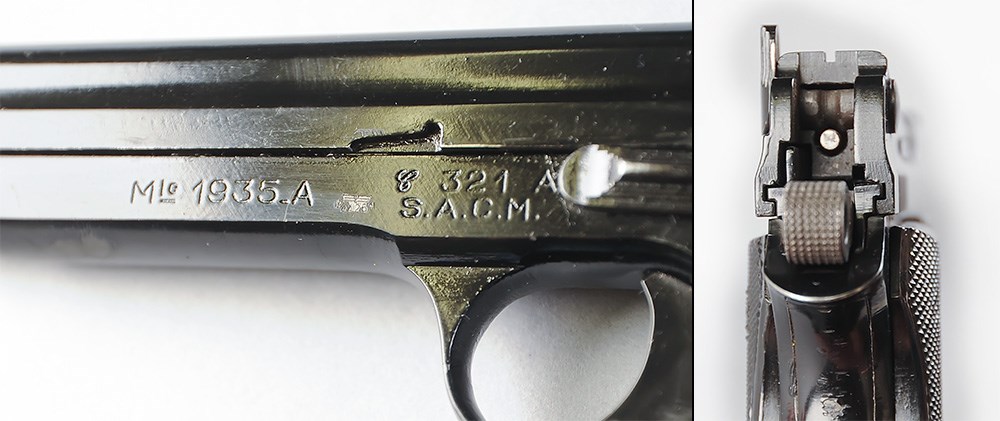
At the beginning of the Great War in 1914, France’s primary handgun was the cunning 8 mm double-action Modèle 1892 revolver, also known as the “Lebel” or “St. Étienne.” As well-made as it was, the gun’s main problem was there just weren’t enough of them. This sent authorities scurrying in an attempt to supplement meager stores of ’92s with just about anything they could find. As well as bringing old French 11 mm Model 1873s back into service, a hodgepodge of semi-automatic pistols and revolvers was accumulated from other sources, primarily Spain and the United States.
After the war ended, the French government, wishing to update its armament and to standardize things, in the 1920s authorized a series of trials testing several arms from a variety of applicants. Curiously, ordnance types became enamored of the American .30 Pedersen cartridge and decided a similar cartridge would be just the ticket for France’s new semi-automatic pistol. After some fits and starts, a list of guidelines was issued for a new set of cartridges beginning in 1933.
The ideal repeater would be single-action, chamber the Pedersen 7.65x20 mm Longue round, have a firing mechanism that could be removed in its entirety for cleaning and servicing, employ a firing pin-block manual safety, and permit simple fieldstripping accomplished by removing the slide stop. It also needed an easily removable inertial firing pin, magazine safety and tapered chamber. Weight was expected to be 1 lb., 7 ozs., or 1 lb., 8 ozs.
Two guns ended up in the final 1935-’37 competition, one submitted by Société Alsacienne de Constructions Mécaniques (SACM), a company heretofore specializing in heavy machinery, and the well-known arms-building entity Manufacture d’Armes de Saint-Étienne (MAS).
Helming the project at SACM was Charles Petter, a Swiss engineer who, in a busy early life had, among other endeavors, served as an officer in the French Foreign Legion. His pistol was a handy, well-thought-out, eight-shot, short-recoil design employing a Browning-style dual-swinging link arrangement that, when the gun was fired, tugged the barrel downward, unlocking it from the slide. It incorporated a captive recoil spring, external hammer and safety lever, which, when rotated upward, rolled a block between the striker and hammer, preventing the latter from contacting the former when the trigger was pulled.
Measuring 7.7" overall with a loaded weight of 1 lb., 13 ozs., it was svelte, comfortable in the hand and simple in operation and construction. The pistol tested favorably and was accepted as the Pistolet automatique modèle 1935A, the “A” in the semi-automatic’s designation referring to “Alsacienne.” Concurrently, the gun submitted by MAS (which though looking much like the 1935A was not interchangeable) was also adopted as the Pistolet automatique modèle 1935S, “S” standing for “Saint-Étienne.”
Production of the M1935A began in October 1937. The pistol was finished with a sturdy baked-enamel finish and fitted with finely checkered Bakelite stocks. Manufacture continued apace, and arms were issued to French forces. With the fall of France in 1940, the M1935A was turned to use by the German conquerors and Vichy forces as the Pistole 625 (f). Those guns made under German occupation, as well as falling within a certain serial number range, will be found with either a “WaA 655” (early) or “WaA 251” Waffenamt code.
After World War II, M1935As continued to be built until 1950, by which time some 874,000 had been made. Though not as widely seen on the collector market as some other foreign guns of their period, enough M1935As (and M1935Ss) show up to keep prices reasonable. The German-era M1935A seen here is in good, original condition with most of its original finish and is worth $700.
Gun: Pistolet automatique modèle 1935A
Manufacturer: Société Alsacienne de Constructions Mécaniques (SACM)
Chambering: 7.65 Longue
Manufactured: 1942
Condition: NRA Very Good (Modern Gun Standards)
Value: $700



































